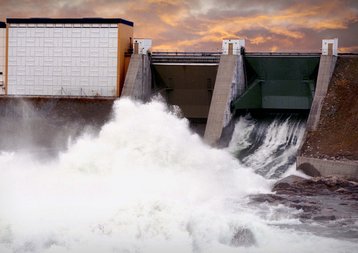The data center industry continuously invests in new ways to make buildings and data centers more energy efficient, future-proof and sustainable. A large portion of a data center’s environmental footprint is the energy consumption and the type of energy consumed. The Nordic region has always been in the forefront of producing and using sustainable and renewable energy.
Even so, one of the main challenges has been transparency, and how to show users and customers that data centers are actually able to prove that they are keeping their promises. We’re not talking about annual or monthly reports; rather, reports showing that data centers are running on green terms on a daily or even hourly basis.
Swedish energy company Vattenfall has created the 24/7 Matching solution, enabling us to have amore accurate picture of what energy is being used – to match with Guarantees of Origin (GOs). This is a great example of how transparency can be secured and it also marks an important step in the industry’s commitment to be carbon neutral by 2030.
Because fulfilling a 100 percent renewable energy commitment requires a better way of tracking renewable electricity. Today, the industry is using Energy Attribute Certificates, called Guarantees of Origin (GOs) in Europe and Renewable Energy Certificates (RECs) in the US. These ensure that the amount of electricity sold corresponds to the amount produced. GOs allow end consumers to choose electricity from a specific source; enabling them to choose electricity exclusively from renewable sources, such as wind, solar, or hydropower.
While we have seen remarkable progress toward renewable sourcing and commitments, lack of transparency is a fundamental flaw in monitoring the source and quantity of energy consumed. In any given hour, a business, in general, does not know the source of the energy it is consuming.
That energy may come from renewable sources, or it may be produced from fossil fuel. The current system has no way of matching the supply of renewable energy with demand for that energy on an hourly basis. And without the transparency of supply and demand, market forces cannot work to ensure that renewable energy demand is supplied from renewable sources.
Through this solution, operators and hyperscalers can use renewable energy through the procurement of GOs, which traces electricity from renewable sources to provide information to electricity customers on the source of their energy – not just on a monthly or yearly basis, but on an hourly basis.
That energy may come from renewable sources, or it may be produced from fossil fuel. The current system has no way of matching the supply of renewable energy with demand for that energy on an hourly basis. And without the transparency of supply and demand, market forces cannot work to ensure that renewable energy demand is supplied from renewable sources.
Through this solution, operators and hyperscalers can use renewable energy through the procurement of GOs, which traces electricity from renewable sources to provide information to electricity customers on the source of their energy – not just on a monthly or yearly basis, but on an hourly basis.
The 24/7 matching of GOs and renewable energy credits (RECs) offers the following benefits:
- Businesses can see if their commitment to 100 percent renewable energy covers each hour of consumption and translate sourcing of renewable energy into climate impact;
- Energy providers can more easily understand demands for renewable energy, hour-by-hour, and take action to help production meet demand;
- 24/7 matching of consumption to production drives true market demand for renewable energy. As 24/7 hourly renewable products are rolled out across the world, they will incentivize investment in energy storage so that energy companies can store renewable energy when it is generated, and consequently continue to supply their customers with renewable energy when it is not. Over time, this storage will enable electricity grids to supply 100 percent decarbonized power;
- The system can inspire regulatory change in how GOs and RECs are created, acquired and retired.
Transparency is key, both in being able to verify a sustainable data center and also in establishing more accurate data on how much green energy is needed from energy companies – now and in the future.



